Search results for: “gas”
-
Landfill gas: rags to riches?
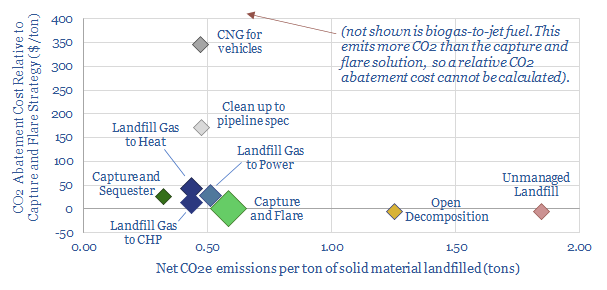
Methane emissions from landfills account for 2% of global CO2e. c70% of these emissions could easily be abated for c$5/ton, simply by capturing and flaring the methane. Going further, low cost uses of landfill gas in heat and power can also make good sense. But vast subsidies for landfill gas upgrading or RNG vehicles may…
-
Back up: does ramping renewables displace gas?
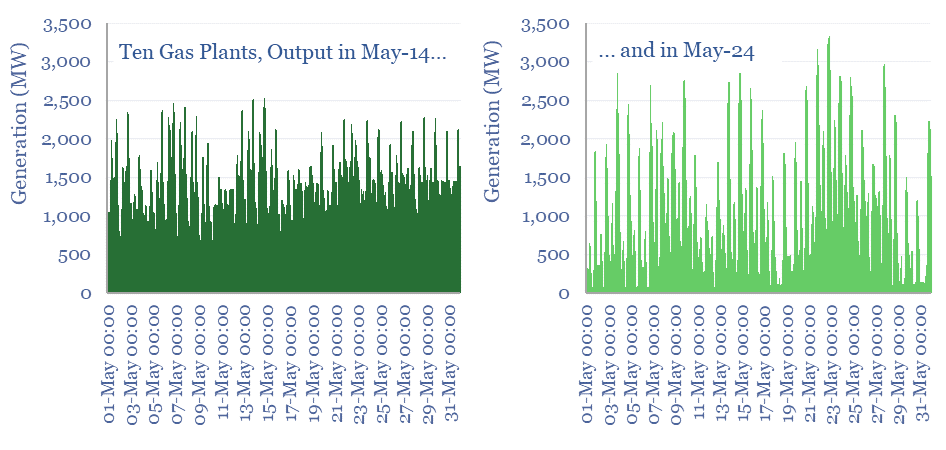
This 12-page note studies the output from 10 of the largest gas power plants in Australia, at 5-minute intervals, comparing 2024 versus 2014. Ramping renewables to c30% of Australia’s electricity mix has not only entrenched gas-fired back-up generation, but actually increased the need for peakers?
-
Global biogas production by country?
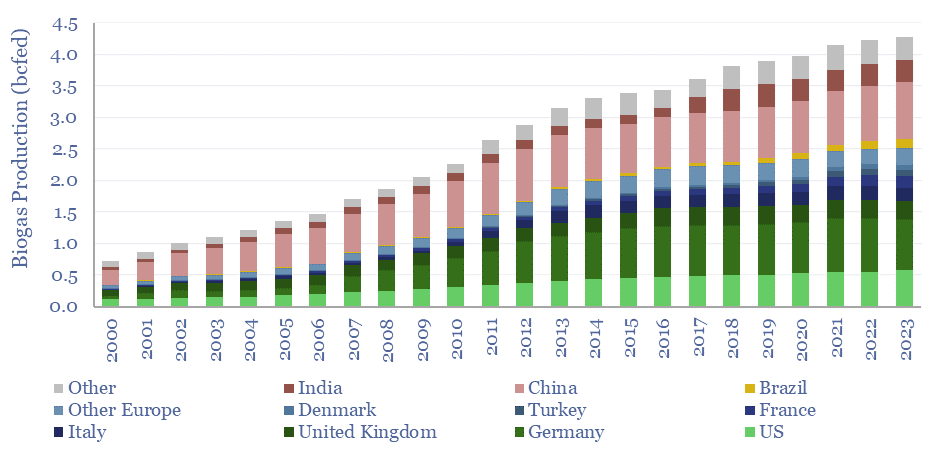
Global biogas production has risen at a 10-year CAGR of 3% to reach 4.3bcfed in 2023, equivalent to 1.1% of global gas consumption. Europe accounts for half of global biogas, helped by $4-40/mcfe subsidies. This data-file aggregates global biogas production by country, plus notes into feedstock sources, uses of biogas and biomethane.
-
US natural gas: the stuff of dreams?
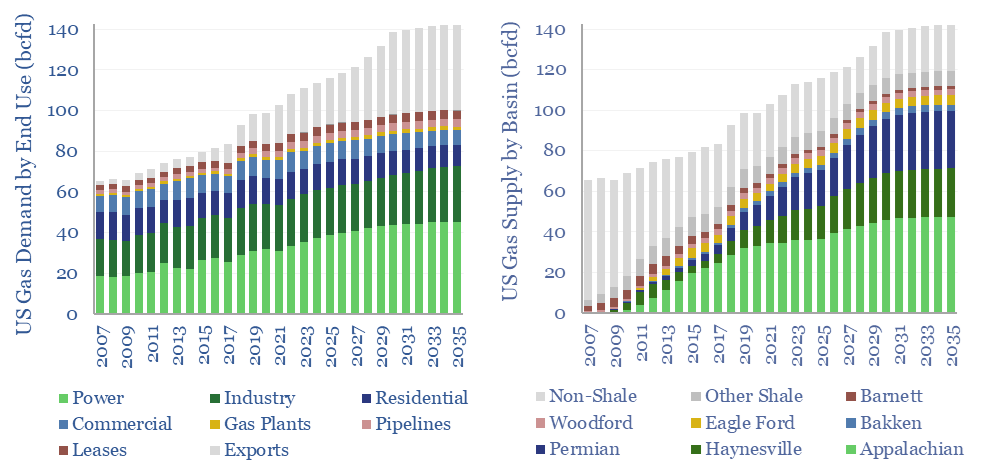
Modeling US gas supply and demand can be nightmarishly complex. Yet we have evaluated both, through 2035. This 13-page report outlines the largest drivers of demand, requires a +3% pa CAGR from the key US shale gas basins, and argues the balance of probability lies to the upside.
-
Gas turbines: what outlook in energy transition?
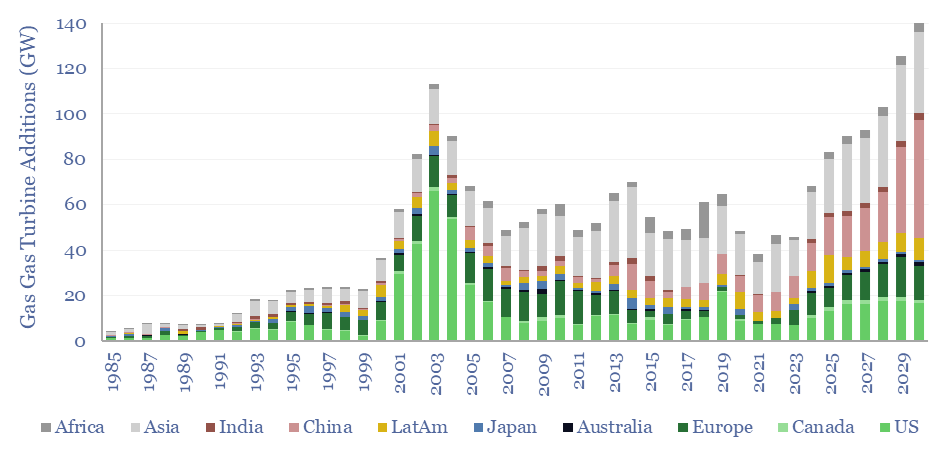
Gas turbines should be considered a key workhorse for a cleaner and more efficient global energy system. Installations will double to 100GW pa in 2024-30, and reach 140GW in 2030, surpassing their prior peak from 2003. This 16-page report outlines four key drivers in our outlook for gas turbines, and their implications.
-
Heavy truck costs: diesel, gas, electric or hydrogen?
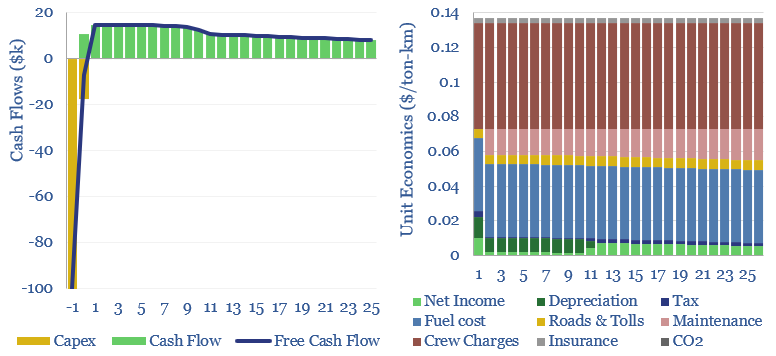
Heavy truck costs are estimated at $0.14 per ton-kilometer, for a truck typically carrying 15 tons of load and traversing over 150,000 miles per annum. Today these trucks consume 10Mbpd of diesel and their costs absorb 4% of post-tax incomes. Electric trucks would be 20-50% most costly, and hydrogen trucks would be 45-75% more, which…
-
Maintenance costs for gas-powered trucks?
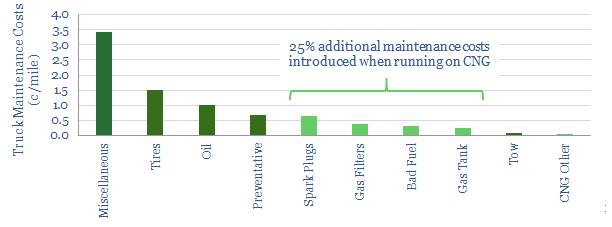
Maintenance costs are tabulated by category, for a fleet of compressed natural gas (CNG) trucks, travelling 16M miles across the United States.
-
Blockchain in the Oil & Gas Supply Chain
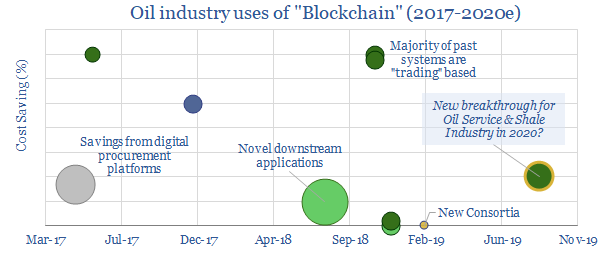
This datafile tabulates ten examples of deploying Blockchain in the oil and gas industry since 2017; including companies and cost savings. Most prior examples are in trading. For 2020, we are particularly excited by the broadening of Blockchain technologies into the procurement industry, which can deflate shale costs.
-
Great white whales: the end of oil and gas?
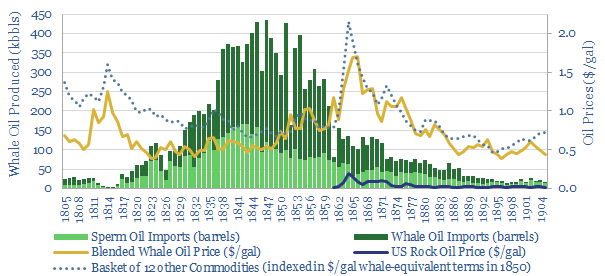
Whale oil was a dominant, albeit barbaric, lighting fuel in the 19th century. But what happened to pricing as the industry was disrupted by kerosene and ultimately by electric lighting? We find whale oil pricing maintained a 25x premium to rock oil and outperformed other commodities as the whale oil market collapsed. As whaling declined,…
-
A new case for gas: what if renewables get overbuilt?

Overbuilding renewables may make power grids more expensive and less reliable. Hence more businesses may choose to generate their own power behind the meter, installing combined heat and power systems fuelled by natural gas. IRRs reach 20-30%. Efficiency is 70-80%. Total CO2 falls by 6-30%. This 17-page note outlines the opportunity.
Content by Category
- Batteries (89)
- Biofuels (44)
- Carbon Intensity (49)
- CCS (63)
- CO2 Removals (9)
- Coal (38)
- Company Diligence (95)
- Data Models (840)
- Decarbonization (160)
- Demand (110)
- Digital (60)
- Downstream (44)
- Economic Model (205)
- Energy Efficiency (75)
- Hydrogen (63)
- Industry Data (279)
- LNG (48)
- Materials (82)
- Metals (80)
- Midstream (43)
- Natural Gas (149)
- Nature (76)
- Nuclear (23)
- Oil (164)
- Patents (38)
- Plastics (44)
- Power Grids (130)
- Renewables (149)
- Screen (117)
- Semiconductors (32)
- Shale (51)
- Solar (68)
- Supply-Demand (45)
- Vehicles (90)
- Wind (44)
- Written Research (354)